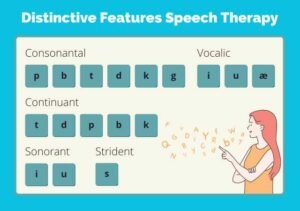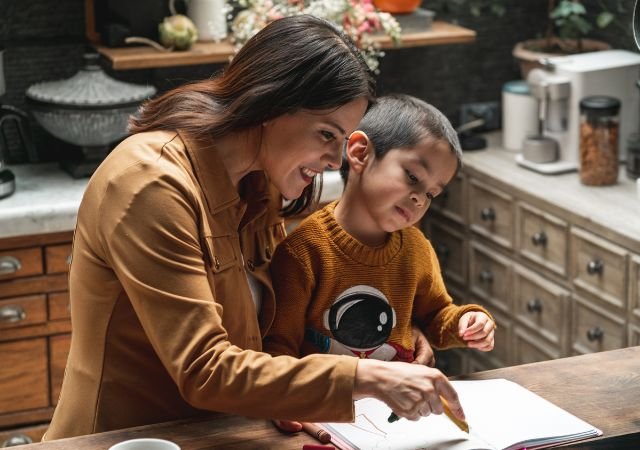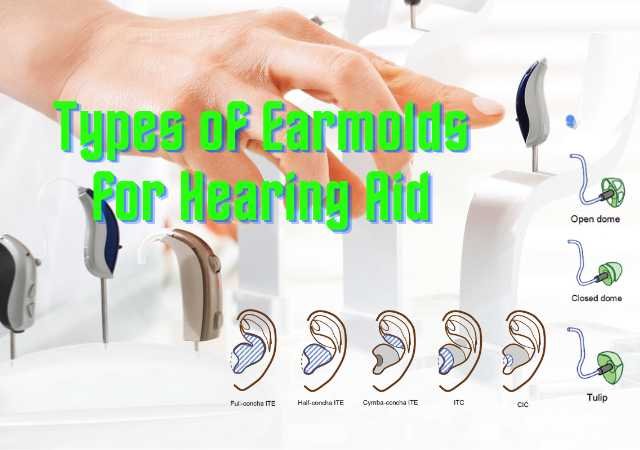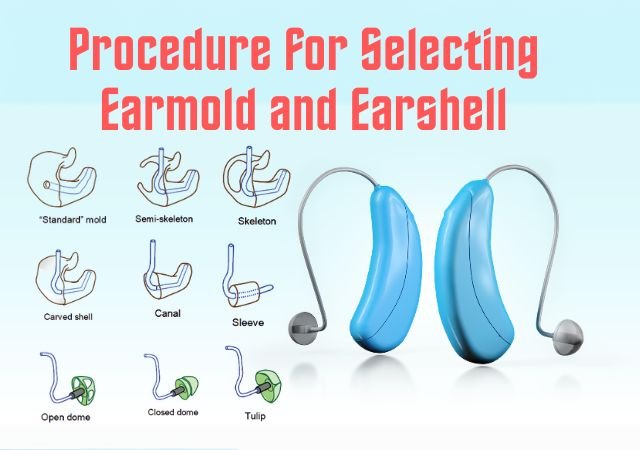
Distinctive Features Speech Therapy: Distinctive feature therapy is a specialized approach within speech therapy that focuses on targeting and refining specific speech sound features. It addresses the unique elements that distinguish one sound from another, allowing individuals to improve their pronunciation and communication skills effectively. This method aims to address and improve the unique elements that distinguish one speech sound from another, ultimately enhancing an individual’s pronunciation and communication skills. The therapy is based on the concept of distinctive features, as outlined by linguists Noam Chomsky and Morris Hallé in 1968.
Distinctive Features in Phonology
A technique based on distinctive features, as outlined by linguists Noam Chomsky and Morris Hallé in 1968, involves utilizing a set of binary (two-valued) features to characterize phonemes across all languages globally. An illustrative binary feature is nasality, where a speech sound is categorized as either nasal or nonnasal, signifying whether the sound energy is transmitted through the nose (+nasal) or not (-nasal). When nasality is treated as a binary feature, sounds can be classified as either +nasal (indicating nasal transmission) or -nasal (indicating the absence of nasal transmission). Thus, a positive value (+nasal) signifies the presence or relevance of the property in describing the sound.
Distinctive Features of Vowel Articulation
First, observe the three primary characteristics distinguishing sounds into sonorant, vocalic, and consonantal classes.
Sonorant sounds are generated with a vocal cavity configuration that permits spontaneous voicing. In essence, the upper vocal tract, located above the larynx, is open enough to initiate voicing without requiring specific laryngeal adjustments. Conversely, nonsonorants or obstruents necessitate special mechanisms for voicing since their cavity configuration does not allow spontaneous voicing.
Vocalic sounds are crafted with an oral cavity shape in which the maximum constriction does not surpass that associated with the high vowels /i/ and /u/, along with vocal folds adjusted to facilitate spontaneous voicing. This characteristic describes the extent of oral cavity opening and vocal fold adjustment.
Consonantal sounds exhibit a clear constriction in the midsagittal or midline region of the vocal tract, while nonconsonantal sounds lack such constriction.
Vowels are characterized as +sonorant, +vocalic, and -consonantal. Collectively, these features signify that vowels are produced with a relatively open oral cavity, without significant constriction in the midsagittal plane, and with a vocal fold adjustment allowing for spontaneous vocal fold vibration.
Distinctive Features | i | ɪ | ɛ | æ | ʌ | ɝ | u | ɔ | ɑ |
| Sonorant | + | + | + | + | + | + | + | + | + |
| Vacalic | + | + | + | + | + | + | + | + | + |
| Consonantal | – | – | – | – | – | – | – | – | – |
Distinctive Features of Consonant Articulation
Earlier, we explored distinctive features in the context of vowels, which can serve as an alternative to the place-manner chart for characterizing consonants. An illustrative instance is the feature of voicing: +voiced is assigned to all voiced consonants, while −voiced is assigned to voiceless ones. Key consonantal features, briefly defined below, are derived from Chomsky and Hallé’s work in 1968.
Consonantal sounds exhibit a marked constriction in the midsagittal region of the vocal tract, distinguishing them as “true” consonants from vowels and glides.
Vocalic sounds lack a marked constriction in the vocal tract and are linked to spontaneous voicing. Voiced vowels and liquids fall into the vocalic category, while voiceless vowels, liquids, glides, nasal consonants, and obstruents (stops, fricatives, and affricates) are nonvocalic (i.e., −vocalic).
Sonorant sounds possess a vocal configuration allowing spontaneous voicing, enabling the airstream to flow relatively unimpeded through the oral or nasal cavity. This feature sets vowels, glides, nasal consonants, and lateral and rhotacized consonants apart from stops, fricatives, and affricates (classified as obstruents).
Continuant sounds experience a complete blockage of the airstream during a portion of their articulation. Stops and affricates are +continuant, distinguishing them from fricatives, nasals, liquids, and glides. Occasionally, the term “interrupted” is used instead of “continuant,” with opposing values assigned; hence, +continuant sounds are −interrupted, and vice versa.
Strident sounds encompass fricatives and affricates that generate intense noise, such as /s/, /z/, /ʃ/, /ʒ/, /tʃ/, and /dʒ/. The noise level depends on constriction characteristics, including the roughness of the articulatory surface, airflow rate, and angle of incidence between the articulatory surfaces.
Distinctive Feature | p | b | m | t | d | n | s | l | θ | k |
| Consonantal | + | + | + | + | + | + | + | + | + | + |
| Vocalic | – | – | – | – | – | – | – | – | – | – |
| Sonorant | – | – | + | – | – | + | – | + | – | – |
| Continuant | + | + | – | + | + | – | – | – | – | + |
| Strident | – | – | – | – | – | – | + | – | – | – |
Distinctive Features Speech Therapy
The journey of distinctive feature therapy encompasses a series of techniques and exercises designed to unlock the potential for precise speech sound production. These techniques are tailored to each individual’s unique needs, making this approach highly effective and adaptable.
Step 1:Identifying Target Features
The first step in distinctive feature therapy is identifying the target features that need improvement. This involves a detailed assessment of the individual’s speech patterns to pinpoint specific areas that require attention.
Step 2: Customized Treatment Plans
Speech therapists develop customized treatment plans tailored to the individual’s unique needs. These plans outline the distinctive features to be targeted and the exercises or activities to address them.
Step 3: Practice and Repetition
Central to distinctive feature therapy is consistent practice and repetition. Individuals engage in exercises that focus on the identified features, gradually honing their ability to produce speech sounds accurately.
Step 4: Auditory Discrimination
Auditory discrimination exercises are a vital component of this therapy. Individuals learn to discern the differences between correct and incorrect articulations, further refining their listening skills.
The Advantages of Distinctive Features Therapy
- Precision in Articulation: Distinctive feature therapy hones in on specific speech sound features, leading to precise articulation. This is particularly beneficial for individuals with speech sound disorders.
- Enhanced Listening Skills: Through auditory discrimination exercises, individuals develop sharper listening skills, enabling them to better understand and replicate correct speech sounds.
- Improved Communication: As individuals master the art of distinct speech sound production, their overall communication skills improve, leading to clearer and more effective interactions.
- Tailored Approach: Distinctive feature therapy offers a tailored approach, addressing each individual’s unique speech sound challenges. This personalized strategy enhances its effectiveness.
Who Can Benefit from Distinctive Features Therapy?
Distinctive feature therapy is a versatile technique that can benefit various groups, including:
- Children with Speech Sound Disorders: This therapy can significantly help children who struggle with speech sound production, enabling them to communicate more effectively.
- Accent Modification: Individuals looking to modify or reduce their accents can utilize distinctive feature therapy to fine-tune specific speech sound features.
- Speech Therapy Professionals: Speech therapists use this approach to design specialized treatment plans for their clients, making it an invaluable tool in their toolkit.
Conclusion
Distinctive feature therapy stands as a remarkable method for individuals seeking to refine their speech sound precision. Whether you’re a child with a speech sound disorder, someone looking to modify their accent, or a speech therapy professional, this approach offers tailored solutions to enhance communication. Embrace the power of speech sound precision with distinctive feature therapy, and embark on a journey toward improved articulation and communication. In the world of speech therapy, it’s the nuances that matter most and distinctive feature therapy equips you to master those nuances.
FAQs about Distinctive Features Speech Therapy
References:
- SPEECH CORRECTION An Introduction to Speech Pathology and Audiology 9th Edition Charles Van Riper [Book]
- Articulation and Phonological disorder Speech Sound Disorders in Children 8th Edition – John E Bernthal [Book]
- Assessment in Speech Language Pathology A Resource Manual 5th Edition, Kenneth G. Shipley, Julie G. McAfee [Book]
- Manual on Developing Communication Skill in Mentally Retarded Persons T.A. Subba Rao [Book]







0 Comments